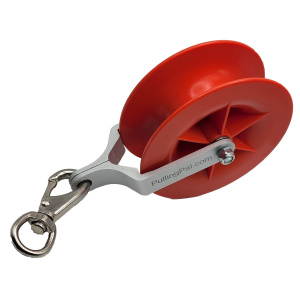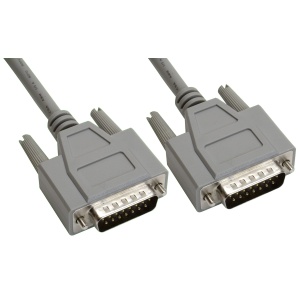Introduction
Picture this: Your workstation or office is in dire need of an organizational overhaul. Wires are sprawling, electronic devices are scattered about, and the untamed chaos is causing you undue stress. A solution is at hand – wall racks. But as you explore the options, you are stuck at a fork in the road: Fixed wall racks versus Swing-out wall racks.
So, what are the differences between fixed wall racks and swing-out wall racks? Well, that’s what we’re here to answer. Fasten your seatbelts as we take a deep dive into the world of wall racks!
What are Wall Racks?
Before we delve into the nitty-gritty, let’s establish a foundation: What exactly are wall racks? Wall racks are mounted fixtures typically used in data centers, studios, or anywhere else that has network equipment. They are the backbone of any structured cabling solution, providing an organized, efficient, and accessible way to house electronic equipment.
A. Types of Wall Racks
There are primarily two types of wall racks: fixed wall racks and swing-out wall racks. The main point of divergence lies in their design and functionality, but the basics remain the same. They both provide a secure housing for your equipment while ensuring airflow and easy access.
Fixed Wall Racks: The Immovable Titans
Fixed wall racks are the traditional option, a true stalwart when it comes to mounting solutions. So, what sets them apart?
A. Structural Rigidity and Stability
Fixed wall racks, true to their name, are solidly attached to the wall. They are sturdy, stable, and offer reliable protection for your equipment. As the saying goes, “a solid foundation is half the battle won.”
B. Cost-Effectiveness
Fixed wall racks are generally more affordable than their swing-out counterparts. For the budget-conscious, this can be a compelling reason to choose fixed wall racks.
C. Space Efficiency
Given their compact and non-moving design, fixed wall racks are ideal for tighter spaces where swing-out motion may not be feasible.
Swing-Out Wall Racks: The Flexible Contenders
Swing-out wall racks, on the other hand, bring a dynamic element into the mix. Let’s swing into their distinct attributes!
A. Accessibility and Convenience
The distinguishing feature of swing-out racks is their ability to swing out, providing easy access to the rear of the equipment. This convenience is a big plus, especially when maintenance or frequent changes are a part of your routine.
B. Enhanced Cable Management
With the swing-out feature, cable management is more straightforward. You can effortlessly route, trace, or replace cables without the strain of cramped spaces.
C. Additional Flexibility
Swing-out racks come in handy in environments where changes are frequent. Their flexible nature makes it easier to incorporate future expansions or rearrangements.
What are the Differences Between Fixed Wall Racks and Swing-Out Wall Racks?
The differences between fixed wall racks and swing-out wall racks boil down to three key areas: accessibility, cost, and space requirement. Swing-out racks score high on accessibility and flexibility, while fixed wall racks win on cost-effectiveness and space efficiency.
A. Accessibility and Flexibility
If you need frequent access to the rear of your equipment, swing-out racks are a clear winner. Their design allows them to swing out, providing easy access for maintenance, cable management, or equipment changes.
B. Cost and Space Requirement
In terms of cost, fixed wall racks generally come out ahead. Their simple, non-moving design tends to be less expensive. They are also a better fit for tighter spaces where a swing-out function may not be feasible or necessary.
Making the Right Choice: Factors to Consider
While both types of racks serve the same fundamental purpose, your specific needs and circumstances will dictate the best choice. Here are a few key factors to consider:
A. Accessibility Needs
If your setup requires regular changes, adjustments, or maintenance, a swing-out rack will make your life easier.
B. Budget Constraints
If you’re operating on a tight budget, fixed wall racks are generally more cost-effective.
C. Space Availability
For environments with limited space, the compact design of a fixed wall rack could be the most practical choice.
Frequently Asked Questions (FAQs)
Q1: Are swing-out wall racks more expensive than fixed wall racks?
Yes, swing-out wall racks are generally more expensive due to their additional functionality and complex design.
Q2: Can I use both fixed and swing-out wall racks in one setting?
Absolutely! Depending on the specific needs of different areas in your space, you can mix and match both types of racks.
Q3: Are fixed wall racks less reliable since they are cheaper?
Not at all. Fixed wall racks offer excellent stability and protection for your equipment. Their lower cost is due to their simpler design, not a compromise on quality.
Q4: Can swing-out wall racks fit in small spaces?
The size of the rack will depend on the specific model. However, remember that swing-out racks require additional space to function properly.
Q5: Can I install these racks myself?
While some handy individuals might be able to, it’s generally recommended to have a professional install these racks for the sake of safety and effectiveness.
Q6: Are there other types of racks besides fixed and swing-out?
Yes, there are also open-frame racks, freestanding racks, and more. The choice depends on your specific needs and constraints.
Conclusion
Choosing between fixed wall racks and swing-out wall racks isn’t a question of which is superior, but rather, which is the most suitable for your specific needs. Whether you need the steadfast stability of a fixed rack, the easy accessibility of a swing-out rack, or a combination of both, the choice is ultimately yours. By understanding the differences and evaluating your requirements, you’re well on your way to a more organized and efficient space!












